In This Issue
- Regulators and Cyber
- Internet Undermining
- Share and Share Alike
- Report from the CEO
- CISA Reporting Rules
- 5G Now New Frontier
- Verizon Field Testing
- Telefonica & Intel 5G
- Avnet Selects NetApp
- Encryption Vs. Cloud
- Verizon Cloud Path
- Telefonica & Huawei
- Blue Coat and NetApp
- Verizon IoT Platform
- Google Wins Spotify
- Virtual Reality Users
- Coming DCIA Events
Regulators Have Cyber on Their Minds
Excerpted from CFO.com Report by John Kennedy & Michael McGinley
 Financial regulators, struggling to keep up with the onslaught of new threats to the public’s sensitive financial and personal data, have spent the last few years examining corporate cybersecurity practices, policies, and procedures and communicating their expectations to executives.
Financial regulators, struggling to keep up with the onslaught of new threats to the public’s sensitive financial and personal data, have spent the last few years examining corporate cybersecurity practices, policies, and procedures and communicating their expectations to executives.
This year, expect regulators to hold companies accountable for their cybersecurity failings.
Since CFOs play a critical role in ensuring their companies are able to meet these expectations, they should stay informed about these developments.
When it comes to enforcing cybersecurity preparedness, the Securities and Exchange Commission (SEC) is flexing its regulatory muscle more than ever before.
Last year, the SEC’s Office of Compliance Inspections and Examinations (OCIE) released the results of its cyber-readiness examination of 57 registered broker-dealers and 49 registered investment advisers.
The examination discovered that while firms had varying degrees of cyber-preparedness, most firms reported that they had been the subject of a cyber-related incident… Read More
Internet Undermining America’s Power
Excerpted from Time Magazine Report by Adam Segal
 The US has incomparable resources, but it may never be as strong in cyberspace as it is today.
The US has incomparable resources, but it may never be as strong in cyberspace as it is today.
Cyber-power may be a particularly ephemeral form of power.
China is developing new competing technologies.
India, Europe, and other friends hold different visions of how to manage the Internet and protect privacy.
The gap between the interests of American technology companies such as Google, Apple, Facebook and Amazon and Washington is growing.
The global, open Internet, a wellspring of US economic, political, and military power, is fragmenting as Beijing, Moscow, Tehran and many others are assert cyber sovereignty.
Some of this loss of power is unavoidable, the result of demographics as the center of gravity for Internet users shifts rapidly from the developed to the developing world.
China now has close to 670 million Internet users; India has more than 350 million and will pass 500 million in 2017… Read Mor
Share and Share Alike
Excerpted from CFO.com Report by David Katz
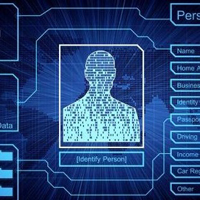 Long-running tensions between corporate defenders of data privacy and the federal government are heating up — or cooling down, depending on your point of view.
Long-running tensions between corporate defenders of data privacy and the federal government are heating up — or cooling down, depending on your point of view.
In a case with arguably national implications, a lengthy legal battle between lawyers representing the Obama administration and Apple came to a head on February 16th, when a federal judge ordered Apple “to build a backdoor to the iPhone,” in the words of Tim Cook, the company’s chief executive.
The judge ordered the company to supply FBI investigators with access to encrypted data on the iPhone of one of the shooters in the San Bernardino,CA, attacks that killed 14 people in December.
“Specifically, the FBI wants us to make a new version of the iPhone operating system, circumventing several important security features, and install it on an iPhone recovered during the investigation,” Cook wrote in an open letter on the day of the ruling.
Contending that the ruling sets a “dangerous precedent” that could provide the government with “the equivalent of a master key” unlocking the encrypted business and personal data of mobile phone users, the Apple CEO opposed the order… Read More
Report from DCIA CEO Marty Lafferty
 We’re now at the one-month countdown to the third annual Internet of Things (IoT) Asia.
We’re now at the one-month countdown to the third annual Internet of Things (IoT) Asia.
This year’s theme is an important one — Closing the Gap: From Vision to Reality — and the 2016 conference promises fresh insights on IoT developments, not only in Singapore, but also around the world.
IoT Asia 2016 will take place on March 30th and 31st at the new Singapore EXPO, and aims to further advance conversations and ideas on this rapidly advancing technology movement and how it will impact our lives by delving into the real issues beyond the possibilities.
What’s new for 2016?
A fresh focus on design dimensions: learn how design is being applied and discover new ideas you can apply in your organization.
Blockchain applications in IoT: gain insights on the business and industry implications, because there’s more to blockchain than fintech or cryptocurrencies.
The Mayor of Eindhoven, Rob van Gijzel, will deliver the Opening Keynote Address.
And developments in smart retail: thought leaders in the Smart Retail Forum (SRF) and its showcase at the exhibition will present useful examples to spur your thinking.
Backed by insights from IoT Asia’s International Advisory Panel (IAP), this year’s event aims to bring you more critical perspectives by sharing real use-cases and case studies, adoption experiences, and challenges faced by practitioners in the field — insights that address the real issues and questions you have.
The conference will feature five tracks, covering: Smart Cities — highlighting urban projects from around the world, their impact, significance, and lessons learned;
IoT Data Analytics — exploring how different organizations are deploying analytical techniques to derive value and business insights, and their experiences from the front-lines;
Design Applications — zeroing in on the value of applying design perspectives in IoT deployments, from product and process design to user and service experience design, supported by examples;
Wearables — featuring discussions on issues like usability, integrated services, and value for individuals and enterprises, as well as emerging applications; and
Industrial IoT — with project case studies, initiatives and insights from test-beds, and new models for IoT deployments in the industrial space.
Register now for the All-Access Conference Pass to enjoy maximum benefits at IoT Asia 2016. Share wisely, and take care.
CISA Rules for Reporting Threat Indicators
Excerpted from Search Security Report by Peter Loshin
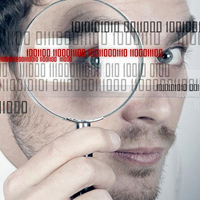 In the first concrete step toward implementing the Cybersecurity Information Sharing Act of 2015, Secretary of Homeland Security Jeh Johnson announced interim guidelines and procedures for sharing cyber-threat indicators under the new law.
In the first concrete step toward implementing the Cybersecurity Information Sharing Act of 2015, Secretary of Homeland Security Jeh Johnson announced interim guidelines and procedures for sharing cyber-threat indicators under the new law.
The guidelines were issued jointly by the Department of Homeland Security (DHS) and the Department of Justice (DoJ) on the US-Cert Automated Indicator Sharing website.
The four documents outlined procedures for the sharing of cyber-threat indicators and defensive measures; guidance on differentiating between information that would be considered a threat indicator and information that would be protected under privacy laws; procedures for the government’s handling of data received through CISA; and a set of interim “privacy and civil liberties guidelines governing the receipt, retention, use and dissemination of cyber-threat indicators by a federal entity obtained” under CISA.
According to Johnson’s statement, CISA “importantly provides two layers of privacy protections: Companies are required to remove personal information before sharing cyber-threat indicators, and DHS is required — and has implemented its own process — to conduct a privacy review of received information… Read More
5G New Frontier for Mobile Carriers & Tech Cos
Excerpted from NY Times Report by Mark Scott
 On the outskirts of this sleepy commuter town just south of London, plans are underway to build the fastest cellphone network in the world.
On the outskirts of this sleepy commuter town just south of London, plans are underway to build the fastest cellphone network in the world.
The work is being done at the University of Surrey, where a leafy campus is dotted with rundown Brutalist-style buildings. Here, researchers and some of the world’s biggest tech companies, including Samsung and Fujitsu, are collaborating to offer mobile Internet speeds more than 100 times faster than anything now available.
Their work on so-called fifth-generation, or 5G, wireless technology is set to be completed in early 2018 and would, for example, let students download entire movies to smartphones or tablets in less than five seconds, compared with as much as eight minutes with current fourth-generation, or 4G, technology.
Companies also could connect millions of devices — including smartwatches and tiny sensors on home appliances — to the new cellphone network, and automakers could potentially test driverless cars around the suburban campus.
“A lot of the technology already works in a laboratory environment,” said Rahim Tafazolli, Director of the University’s research center that oversees the 5G project, which includes almost 70 powerful radio antennas around the two-square-mile campus… Read More
Verizon Touts Field Testing as 5G Rush Intensifies
Excerpted from Network World Report by Jon Gold
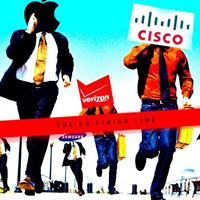 Partially drowned out by the gadget-driven furor of Mobile World Congress 2016 were announcements this week from Verizon that the company has completed testing of what it’s calling a 5G network, in New Jersey, Texas and Oregon.
Partially drowned out by the gadget-driven furor of Mobile World Congress 2016 were announcements this week from Verizon that the company has completed testing of what it’s calling a 5G network, in New Jersey, Texas and Oregon.
Verizon’s partners in the 5G wireless testing included everything from carrier equipment vendors to smartphone makers — Apple, Cisco, Ericsson, Intel, LG, Nokia, Samsung, and Qualcomm were all participants.
The company claims that it regularly achieved multi-gigabit performance at sub-millisecond latency through the use of advanced MIMO, beamforming and tracking technology, and more besides.
A broad application of the network upgrades that Verizon tested would mean potentially huge speed increases, and the company is looking to perform wider-scale testing as quickly as possible.
“We want to quickly make some key technical decisions and move rapidly to pre-commercial form factors and testing later this year,” said Adam Koeppe, the Verizon Vice President who’s in charge of the testing efforts.
Verizon is understandably eager to push forward on advanced networking technology, and has already announced field tests of other tech. The company is trying out LTE-U in Raleigh, NC and Oklahoma City, OK… Read More
Telefonica & Intel Team-Up for 5G
Excerpted from Light Reading Report by Paul Rainford
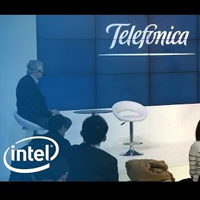 Telefonica has announced a 5G collaboration with Intel, which will see them work together on the testing of pre-standard 5G technologies and new features being incorporated into LTE-Advanced Pro, sometimes called 4.5G.
Telefonica has announced a 5G collaboration with Intel, which will see them work together on the testing of pre-standard 5G technologies and new features being incorporated into LTE-Advanced Pro, sometimes called 4.5G.
The research will be divided into two strands, one focused on the actual 5G wireless systems and the other on virtualization software for 5G networks.
In related news, Nokia is to help upgrade Telefonica ‘s IP core network, supplying its 7950 XRS core router, among other gubbins, as part of the Spanish giant’s “Fusion Red” program.
The upgrade is intended to prepare the ground for the wider uptake of Ultra HD, cloud and IoT services by Telefonica customers, as well as the arrival of 5G.
Deutsche Telekom, Orange, Singapore Telecommunications, and Telefonica have joined forces to launch “Go Ignite,” the umbrella brand name for the operators’ efforts to connect the start-up ecostystems of the EMEA region and Latin America.
The alliance has put out its first global call for start-ups to enter projects in one of five categories… Read More
Avnet GSA Schedule Adds NetApp Solutions
Excerpted from Avnet Press Announcement
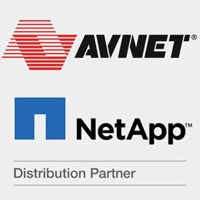 Avnet Government Solutions, a wholly owned subsidiary of Avnet, a leading global technology distributor, today announced that it has expanded its General Services Administration (GSA) schedule to include NetApp products and solutions.
Avnet Government Solutions, a wholly owned subsidiary of Avnet, a leading global technology distributor, today announced that it has expanded its General Services Administration (GSA) schedule to include NetApp products and solutions.
Avnet partners will now be able to provide NetApp data storage and management solutions to government organizations that rely on their application, virtualization, and cloud environments.
This will allow Avnet Government Solutions to better serve its government (federal and state, local and education) partners, and broaden their offerings for the public sector.
The addition of NetApp to Avnet Government Solutions’ GSA schedule gives partners access to the federal government’s largest Government-Wide Acquisition Contract (GWAC), which agencies use to purchase innovative solutions for their IT needs, without making the expensive investments to maintain their own contracts.
“Avnet Government Solutions looks forward to working closely with NetApp to deliver comprehensive data storage and management solutions to public sector customers,” said Pete Rzonca, President of Avnet Government Solutions… Read More
Encryption Vs. Cloud Computing: Latest Debate
 Does backing up data to the “cloud” actually put it in easier reach for law enforcement?
Does backing up data to the “cloud” actually put it in easier reach for law enforcement?
According to The Wall Street Journal (WSJ), while encryption helps to keep a user’s data protected, as soon as this data is sent to the cloud, those same protections could quickly be undermined.
“The safest place to keep your data is on a device that you have next to you,” Marc Rotenberg, head of the Electronic Privacy Information Center, told WSJ.
“You take a bit of a risk when you back up your device.”
“Once you do, it’s on another server.”
The fact of the matter is that major cloud computing companies typically comply with court orders and search warrants requesting that data be turned over to law enforcement, whereas this data would be much more difficult to obtain if it was only available on a device.
“The movement to the cloud has created new privacy risks for users and businesses,” Rotenberg continued… Read More
Verizon Charts Different Cloud Services Path
Excerpted from CIO.com by Andy Patrizio
 When running down the list of top cloud vendors, the name Verizon doesn’t come up immediately, but the firm is looking to expand its particular brand of cloud services.
When running down the list of top cloud vendors, the name Verizon doesn’t come up immediately, but the firm is looking to expand its particular brand of cloud services.
Late last year, the company denied reports it was looking to sell off its enterprise services business, which include cloud services and data centers.
At the Wells Fargo Securities 2015 Technology, Media & Telecom Conference in late November, Verizon CFO Francis Shammo denied reports that his company is considering selling some of its enterprise assets after a Reuters report said just that.
At that time, Verizon had been on a bit of a selling spree, unloading its residential landline assets for $10.54 billion to Frontier Communications in February 2015 and its cell tower portfolio for more than $5 billion.
And it turns out Verizon was in a selling mood, but not of the cloud services.
A few weeks back on the company’s quarterly earnings call, Shammo confirmed that the company was considering selling its data centers but not the services. Verizon picked up a bunch of data centers when it bought Terremark in 2011… Read More
Telefonica & Huawei Join Forces on Smart Home
Excerpted from FinChannel Report
 At Mobile World Congress (MWC) 2016, Telefonica and Huawei announced yesterday they are joining forces to develop the Smart Home category in Latin America.
At Mobile World Congress (MWC) 2016, Telefonica and Huawei announced yesterday they are joining forces to develop the Smart Home category in Latin America.
Using Huawei ´s cloud based platform and a jointly designed exclusive user experience, Telefonica will provide their Latin American customers with an innovative Smart Home experience, becoming the first telco to offer these services in the region.
This collaboration strengthens the operator commitment to bringing the latest technology to their customers, going along with them in its discovery and use.
Huawei ´s Smart Home platform is a cloud-based solution that will allow Telefonica to rapidly deploy an end to end smart home solution in multiple Latin American markets.
This best-in-class platform follows the highest standards in terms of security and reliability and it is designed as an open and rich ecosystem, in which OEMs and relevant players in the IoT arena can be integrated and become part of a strong smart home proposition, extending their market reach, according to Huawei… Read More
Blue Coat & NetApp High-Density Storage
Excerpted from MarketWired Report
 Blue Coat Systems, a market leader in enterprise security, and NetApp, a leader in enterprise storage, today announced the companies are working together to provide high-density storage solutions that enable extended network forensic analysis.
Blue Coat Systems, a market leader in enterprise security, and NetApp, a leader in enterprise storage, today announced the companies are working together to provide high-density storage solutions that enable extended network forensic analysis.
This combination of NetApp’s high density storage and Blue Coat’s Security Analytics incident response and forensics solution provides customers a high-performance and high-density storage solution that significantly expands the capture window from weeks to months within the same physical footprint.
Customers can retain more valuable evidence that can help limit exposure in the event of a breach, together with the ability to replay and reconstruct exactly how the attacker compromised the system and what was extracted.
With the advent of sophisticated targeted attacks, organizations are facing a growing demand for more scalable storage as they work to protect, detect and remediate network attacks.
Blue Coat Security Analytics works to provide proactive incident response by constantly detecting malicious activity and enriching the retained data to pin point potential issues… Read More
Verizon Boasts Momentum for IoT platform
Excerpted from Mobile World Live Report
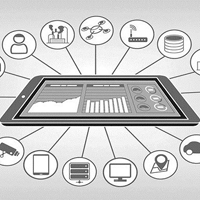 Verizon said more than 4,000 developers are using ThingSpace, the Internet of Things (IoT) platform that the operator unveiled last October.
Verizon said more than 4,000 developers are using ThingSpace, the Internet of Things (IoT) platform that the operator unveiled last October.
The operator also announced plans to open up ThingSpace — designed to make it easier for developers to roll out IoT devices and applications — to third-party network and technology service providers.
A new set of tools, addressing “industry-wide security concerns” surrounding IoT, are also in the pipeline, it said.
When Verizon launched ThingSpace, the operator had an additional aim of developing a new scalable IoT core within its 4G LTE network for large deployments of low-power connections.
Following completion of design and integration work with Nokia and Ericsson, Verizon claimed that the path was now clear to launch the scalable IoT core network later this year.
Other IoT developments, noted the operator, were a “wide-selection of devices” certified on its existing LTE architecture for IoT applications using low-cost Category 1 chipsets /modules by Gemalto, Sequans, and Telit.
Verizon Cloud APIs are also available “to help developers improve consumer experiences for mobile apps… Read More
Google Wins Spotify’s Cloud Business
Excerpted from Geekwire Report by James Risley
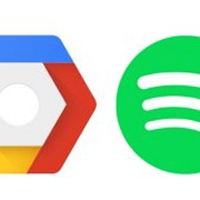 You may not be storing much music on your computer or phone anymore, but it’s still taking up a lot disk space somewhere. Spotify has been handling that storage for its 75 million users until now, but it’s turning to the cloud for future.
You may not be storing much music on your computer or phone anymore, but it’s still taking up a lot disk space somewhere. Spotify has been handling that storage for its 75 million users until now, but it’s turning to the cloud for future.
Today, the streaming music service announced that it will transition its streaming library and infrastructure to Google Cloud Platform over the next 18 months.
Spotify, which started in 2006 when cloud services like Amazon Web Services were just starting, held off on moving to the cloud until some standards had been established.
According to an interview with Spotify vice president of engineering Nicholas Harteau in Wired, early cloud services weren’t ready for the kind of tasks Spotify needed.
“For a while, we couldn’t get the quality, the reliability, the price out of cloud services that we needed,” Harteau said.
Getting Spotify on its cloud is a pretty big win for Google. Amazon’s AWS division is seen as a pioneer in providing cloud services to other companies, but Microsoft’s Azure cloud services have also been successful… Read More
What Virtual Reality Users Want Most
Excerpted from eMarketer Report
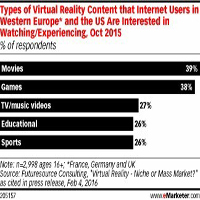 Virtual reality (VR) may be in its early stages, but Internet users are already interested in experiencing it, according to October 2015 research.
Virtual reality (VR) may be in its early stages, but Internet users are already interested in experiencing it, according to October 2015 research.
Futuresource Consulting looked at the types of virtual reality content that Internet users in the US, France, Germany, and the UK were interested in watching and experiencing.
Some 39% of respondents said they were interested in watching or experiencing movies in VR, and 38% of Internet users said they were fascinated in gaming.
Additionally, 27% of respondents said they were interested in watching TV and music videos via VR, and 26% said they were interested in experiencing educational content.
A little over a quarter (26%) also said they want to experience virtual reality sports content.
VR can be an immersive medium for marketers and a new way they can tell stories and engage with audiences like never before.
What’s more, consumers are highly interested in VR, and not just Gen Z. Older generations are drawn to it, too… Read More
Coming Events of Interest
IoT Asia 2016 — March 30th-31st in Singapore. IoT Asia returns in 2016 with fresh insights on Internet of Things (IoT) developments around the world. The 3rd edition aims to further advance conversations and ideas on IoT and how it will impact our lives by delving into the real issues.
Delivery of Things World — April 25th-26th in Berlin, Germany. DevOps specialists, continuous development strategists, architect newbies, development geeks, and cloud geniuses from across the spectrum of DevOps transformation come together at this stimulating and innovative event.
DataCloud Europe 2016 — June 8th-9th in Monte Carlo, Monaco. The 2016 conference will focus on cloud computing advances and changes in data management, with a stellar line-up of speakers including global infrastructure leaders and subject matter experts.
Cloud and DevOps World Forum 2016 — June 21st-22nd in London, England. Now in its eighth year, C&DWF is firmly established as the leading content-led exhibition for the European Cloud and DevOps community and the premiere meeting place for CIOs.
Security of Things World — June 27th-28th in Berlin, Germany. Topics include securing cyber physical systems for IoT, expanding IT security with intelligence-led ops, business continuity management considerations, data privacy in an interconnected world, and security strategies.
Industry of Things World Europe — September 19th-20th in Berlin, Germany. IoT business models, new IoT markets and strategies, product lifecycle management, next generation data handling and value assessment, IoT organizational impacts, and IoT security issues.
